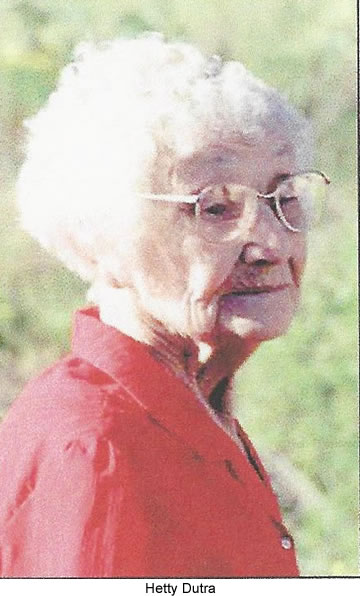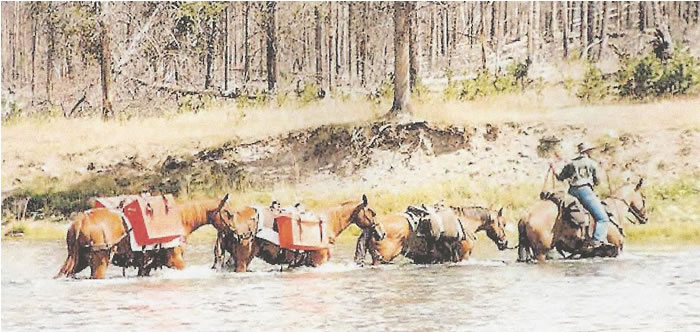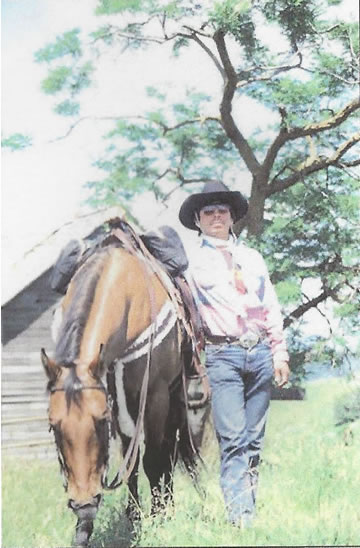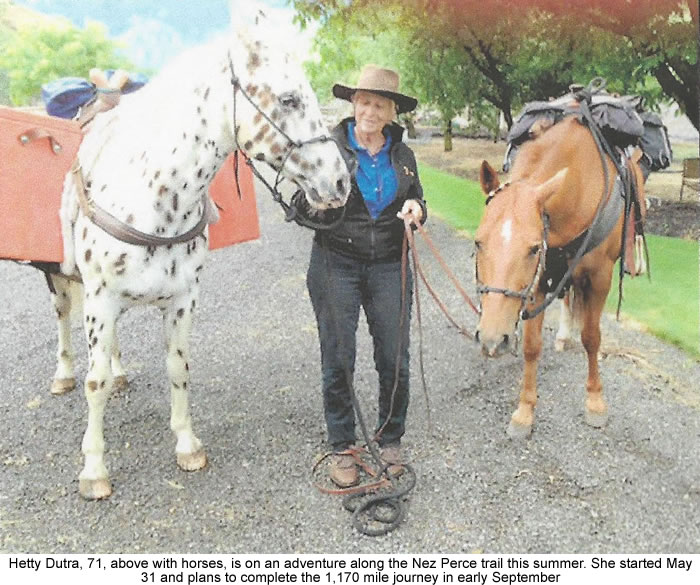 |
Canku Ota
|
 |
|
(Many Paths)
|
||
|
An Online Newsletter
Celebrating Native America
|
||
|
August 2014 - Volume
12 Number 8
|
||
|
|
||
|
‘Renegotiating’ along
the Nez Perce Trail
|
||
|
by Roisen Seifert -
Confederated Umatilla Journal
|
||
|
Hetty Dutra is no ordinary 71 year old. This summer the adventurous ‘golden age’ Californian is riding the entire Nez Perce Trail solo with just her two horses for company. For the second time.
She set off on her second epic adventure from Wallowa Lake on the 31st of May, 2014 with little fanfare. She expects to average around 13 miles a day. If all goes to plan she will complete the 1,170 mile trail in early September. She intends to go past the official end of the trail at Bear Paw, Montana, and follow the route of the handful of Nez Perce who managed to slip away and cross the Canadian Boarder before Chief Joseph’s famous surrender. As most of you know, but a large portion of Americans do not, what is now the Nez Perce National Historic Trail is the flight path taken by the Joseph band of Nez Perce starting at Wallowa, Oregon and ending near Chinook, Montana. The trail traverses through portions of the U.S. states of Oregon, Idaho, Wyoming and Montana and connects 38 separate historical sites that commemorate significant events that took place as the Nez Perce tried to escape capture by the U.S. Cavalry. Her mounts are two 12-year old geldings, Shaggy, a quarter horse, and Cheetah, an Appaloosa. Her trip is funded mostly by donations so she was limited in her selection of mounts, and has chosen these two for conformational correctness. She says she’ll only know if they have that key ingredient, ‘heart’, a few weeks into the ride. Inspired by the historical riders of 1877, she is not carrying any feed, letting her horses get all their nutrition from grazing periodically throughout the day. With just two orange plastic pack panniers, she has only the basics with her – a water purifier, propane stove, tent, sleeping bag, freeze-dried food, extra set of barium reinforced horse-shoes and a satellite attachment for her iPhone from which she is sporadically blogging. Dutra grew up on a cattle ranch in California, and has ridden since she could walk. In her everyday life she is a divinity scholar and owner of a large equestrian facility outside Berkley, California. When I spoke to her on the morning of her departure, she reflected on her experience riding the trail 20 years ago at the age of 50, as well as looking forward to her immanent ride.
What has called her on this soul searching quest on the Nez Perce trail, not once, but twice? She set out on her first ride in 1994 after life had thrown her a rack of curve-balls – in a 60 day period her mother died , she got divorced, her bishop declined to ordain her and she turned 50. “I felt disconnected from mind and body,” she said. “I needed to go back to nature to find myself.” Her experience on the trail 20 years ago, which included “dreams and visions,” totally transformed her and “connected her with her authentic self.” Last year, at the age of 70, she looked in the mirror and felt disconnected from “the old lady standing there” and felt it was time to do it again, because “every seven years you’re a new person – your cells change - you have to renegotiate – it feels like it worked last time.”
She calls her ride a pilgrimage, but a pilgrimage to what? To seek personal wellbeing by paralleling her personal trauma with the trauma of the flight, and overcoming both her personal trauma and the challenge of the trail day by day, one hoof beat at a time. Dutra is by no means the only equestrian to feel the draw of this trail. 2014 marks the 50th anniversary of American Appaloosa Horse Club’s annual “Chief Joseph Ride.” As readers of this journal well know, the Nez Perce are widely credited with the creation of this unique spotted American horse breed. Each year around 200 appaloosa horse enthusiasts ride 1/13th of the Nez Perce trail, covering the whole thing in 13 years at a very recreational pace. This ride dwells less on trauma and is more of a celebration of the Appaloosas heritage. This ride is fully organized by the American Appaloosa Horse Club, and anyone with a registered appaloosa can apply to join the fun. This has caused some minor controversy as several Nez Perce decedents feel that the horse registration criteria misses the point and their own heritage and blood should qualify them for the ride on any horse. Alongside the mostly Soyapoo trail enthusiasts, each year the Nez Perce tribe of Idaho sends a handful of Native youth to experience their equestrian heritage on the AphC ride. The Umatilla equivalent to this is the recently instigated annual ride from the UIR reservation to the Tamkaliks Pow Wow Grounds in the Joseph homelands of Wallowa. While most people find the story of the Nez Perce trail moving and some, like Hetty report that riding it is a spiritual experience, the trail is a fundamental part of the identity of the Nez Perce and their decedents throughout the northwest. While Hetty’s is an extreme case, the trail means many things to many people. And you don’t need a string of horses to explore it. A complete self-driving auto-tour, including maps and an accompanying book is available, and you can comfortably drive routes paralleling the trail all the way from Wallowa, though Yellowstone, to Montana.
You can follow Hetty’s trip on her blog at www.nezpercetrailride.com Information about the trial and historical sites, including maps can be found at http://www.fs.usda.gov/main/npnht/home Roisen Seifert is a Ph.D candidate from Ireland studying Platuea horse culture on the Umatilla and Nez Perce Reservations. |
||
|
|
||
|
|
||
| Canku Ota is a free Newsletter celebrating Native America, its traditions and accomplishments . We do not provide subscriber or visitor names to anyone. Some articles presented in Canku Ota may contain copyright material. We have received appropriate permissions for republishing any articles. Material appearing here is distributed without profit or monetary gain to those who have expressed an interest. This is in accordance with Title 17 U.S.C. Section 107. | ||
|
Canku Ota is a copyright ©
2000 - 2014 of Vicki Williams Barry and Paul Barry.
|
||
 |
 |
|
|
The "Canku
Ota - A Newsletter Celebrating Native America" web site and
its design is the
|
||
|
Copyright ©
1999 - 2014 of Paul C. Barry.
|
||
|
All Rights Reserved.
|
||


 Why
did she choose the Nez Perce Trail in particular? For her, the Nez
Perce trail is a site of trauma, which resonates with her own personal
trauma. Like many other, less-adventurous tourists, she is primarily
attracted to the tragedy of the Nez Perce flight. She is not working
with any contemporary Native people, although she sought the blessing
of the Nez Perce Tribal Executive Committee and Horace Axtell at
Nez Perce for her 1994 ride.
Why
did she choose the Nez Perce Trail in particular? For her, the Nez
Perce trail is a site of trauma, which resonates with her own personal
trauma. Like many other, less-adventurous tourists, she is primarily
attracted to the tragedy of the Nez Perce flight. She is not working
with any contemporary Native people, although she sought the blessing
of the Nez Perce Tribal Executive Committee and Horace Axtell at
Nez Perce for her 1994 ride.